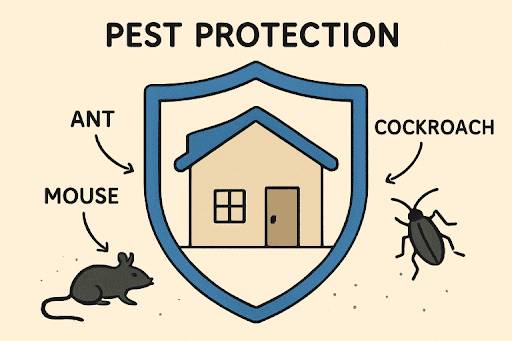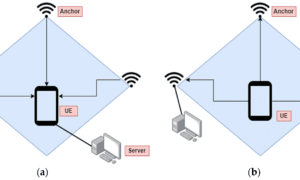Table of Contents
- Seal Entry Points
- Maintain Cleanliness
- Proper Food Storage
- Manage Moisture Levels
- Use Natural Repellents
- Regular Home Inspections
- Landscape Maintenance
- Seek Professional Assistance
Keeping your living space free from pests is about more than comfort—it’s vital for health and peace of mind. By proactively defending your house from common intruders, you can safeguard your family’s well-being and avoid costly property damage. If you’re searching for effective solutions and area-specific advice, pest control in Columbia, SC offers targeted help and professional expertise to keep your home protected year-round.
Pests often invade spaces unexpectedly and can be persistent if not addressed promptly. Establishing a plan with several crucial prevention methods is your best defense against infestation. Each technique below offers another layer of security, whether you live in a new build or a historic home. By consistently applying these practices, you can significantly reduce the risk of pest-related issues and maintain a clean, pleasant indoor environment.
Here’s a comprehensive guide to simple yet effective pest prevention strategies, ideal for homeowners —from DIY enthusiasts to those seeking periodic professional help. Let’s break down what you need to know to keep unwelcome critters at bay.
Seal Entry Points
Every house, regardless of age or location, is susceptible to pests slipping in through unnoticed cracks and crevices. Begin by walking around the perimeter of your home, checking windows, doors, and places where pipes or cables enter the building. Even the tiniest gap can invite ants, mice, or cockroaches indoors. Use quality caulk to seal smaller cracks and apply weatherstripping as needed. Door sweeps are simple additions to keep bugs from sneaking under exterior doors, making this a practical starting point for any pest control regimen.
Maintain Cleanliness
Cleanliness is a frontline defense against infestation. Sweep and vacuum high-traffic and hard-to-reach areas regularly, especially kitchens and regions prone to crumbs or moisture buildup, such as under sinks and behind appliances. Garbage bins should be emptied often and cleaned routinely. Since pests like cockroaches and rodents are especially attracted to food debris, creating a daily cleaning checklist can make a big difference in keeping invaders out of your home.
Proper Food Storage
Pest prevention extends to the way you store your food. Use airtight containers for all grains, snacks, pet food, and bulk goods, replacing cardboard packaging with sturdy glass or plastic alternatives. This not only preserves freshness but also serves as a physical barrier against beetles, ants, and other pests that seek food. Be mindful to quickly clean up spills in pantries and dispose of expired food items to eliminate attractive scents that may draw unwanted visitors inside.
Manage Moisture Levels
Damp areas are hotbeds for pest activity. Inspect basements, bathrooms, and areas near water heaters or laundry machines for leaks. Promptly repair dripping faucets or pipes and deploy dehumidifiers in trouble spots, such as crawl spaces or attics. Well-maintained gutters and downspouts ensure rainwater flows away from your house, discouraging mosquito breeding and reducing the risk of wood-damaging insects settling in. Low humidity indoors not only deters pests but also prevents mold growth, supporting better air quality for your family.
Use Natural Repellents
If you prefer alternatives to chemical treatments, natural pest repellents can be an effective, eco-friendly option. Essential oils—such as peppermint, citronella, tea tree, and lavender—are known to deter insects when diluted and sprayed along windowsills, doorways, and baseboards. For exterior protection, consider landscaping with plants like marigolds or rosemary, which pests tend to avoid. These living repellents can beautify your yard while reinforcing your home’s defenses against bugs.
Regular Home Inspections
Routine inspections of attics, basements, crawl spaces, and garages are crucial, especially in older homes where vulnerabilities may develop over time. Look for telltale signs such as droppings, gnaw marks, or evidence of nests. By spotting an early sign of pest activity, you can address minor problems before they escalate into full-blown infestations requiring intensive remediation. Setting a seasonal schedule for these inspections helps you stay a step ahead year-round.
Landscape Maintenance
Your home’s exterior plays a significant role in pest prevention. Trim back shrubs and overhanging tree limbs to reduce the “bridges” that pests use to enter your house. Remove leaf litter, fallen branches, and excess mulch, which may harbor insects and rodents. Keep grass trimmed and ensure firewood is stored well away from the foundation. By reducing exterior hiding places and maintaining tidy landscaping, you cut off potential pest pathways and make outdoor spaces less attractive to unwanted guests.
Seek Professional Assistance
Sometimes, despite your best efforts, pests may persist. This is when calling in professional pest control is wise. Qualified experts offer thorough inspections, effective treatments, and personalized prevention plans suited to your property and local pests. Whether you’re dealing with termites, bed bugs, or aggressive ant colonies, professional help can save money and stress in the long run, ensuring your home remains a healthy haven for all who live there.
Implementing this multi-layered approach to pest prevention will go a long way in protecting your living space from unwanted invaders. By remaining vigilant and consistently applying these tips, you can enjoy a comfortable, pest-free home—year after year.



































